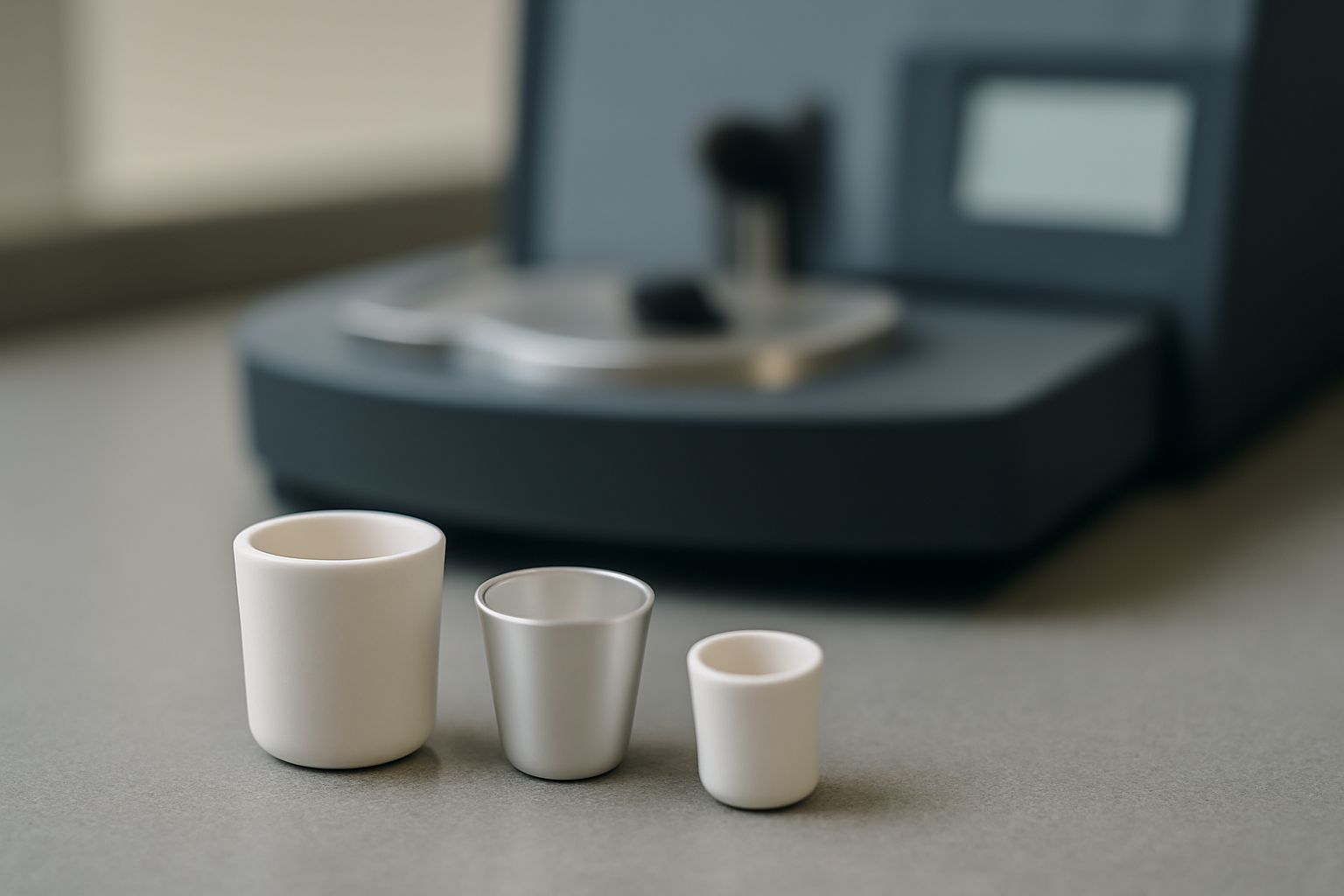Your cart is empty.
shop now
Your cart is empty.
shop now
Thermal testing can fail if the wrong crucible or method is used. Many labs deal with unreliable results from poor crucible preparation or selection.
Using high-temperature analysis crucibles correctly in DSC and TGA depends on proper material choice, careful preparation, and strict following of laboratory best practices for accurate and repeatable results.

I have seen mistakes with crucible handling cause failed measurements, especially in advanced thermal labs. I want to show you clear and simple ways to avoid those problems, so every test produces data you can trust.
Unstable heat flow or uneven melting can lead to wrong conclusions in DSC. Bad crucible choice can distort your analysis, wasting both time and samples.
DSC measures heat flow in materials as they heat up. The crucible holds the sample and ensures accurate, reproducible measurement by controlling the sample environment.
In my DSC work, I rely on aluminum crucibles for their excellent thermal transfer and purity. Platinum and ceramic crucibles get used for high-temperature or special tests. The crucible’s main job is to protect the sample and let the heat flow cleanly between the sample and the instrument’s sensors. The following table shows which crucible type matches the DSC analysis:
| Crucible Material | Max Temp (°C) | Best For | Thermal Conductivity | Reference |
|---|---|---|---|---|
| Aluminum | 650 | Standard DSC studies | High | Aluminium |
| Platinum | 1600 | Extreme temp, purity | Very high | Platinum |
| Ceramic | 1400 | Corrosive samples | Medium | Ceramic |
Well-matched crucibles keep baseline data flat and boost the quality of every DSC curve your lab records.
TGA results can become wrong if the crucible holds residue or has damaged surfaces. Cross-contamination or missed details often ruin whole test series.
Always clean, inspect, and bake your crucibles before TGA analysis to prevent contamination, reduce baseline drift, and support precise weight measurements during thermal decomposition.
I use a step-by-step checklist for every run: (1) Wash all pans in a lab washer, (2) dry thoroughly, (3) check for cracks or stains, and (4) pre-bake at a temperature just below the main test. Pre-baking removes hidden moisture and surface contaminants. Only flawless crucibles reach the instrument tray. Table below summarizes my prep workflow:
| Preparation Step | Action | Purpose | Reference |
|---|---|---|---|
| Cleaning | Lab glassware washer, solvents | Removes residue | Washer |
| Inspection | Look for cracks, chips | Ensure fit and safety | Lab SOP guide |
| Pre-bake | Heat crucible just below test temp | Eliminate moisture | Instrument manual |
This regular routine cuts down on failed runs and protects sensitive TGA sensors from damage or drift.
Skipping best practices or using the wrong technique with crucibles can end in broken devices or missing data—costing your lab time and money.
Do always use dedicated tools, handle pans with clean gloves, and check fit before each run. Don’t scrape, overheat, or use pans beyond their rated lifespan.
Over many years, I have found these habits stop most lab problems. Always log pan usage to avoid using old or worn-out crucibles. Rotating pans avoids early wear. Never overload crucibles or force them into position. See my habit breakdown here:
| Do | Why | Don’t | Why to Avoid |
|---|---|---|---|
| Use clean gloves | Prevents contamination | Touch with bare hands | Oil/dust ruin results |
| Follow cycle log | Track pan lifespan | Ignore wear/age | Hidden cracks or leaks |
| Use proper fit | Protects the instrument | Force wrong pan in | Damage holder/sensor |
Strong habits and strict do’s and don’ts keep most errors and losses out of my high-temperature analysis work.
Poor crucible selection leads to bad test sensitivity and off-target results. Labs risk wasting time, samples, and budget if they skip this step.
Choose crucibles for thermal analysis by matching material, volume, instrument type, and max temperature to your sample and testing needs.
I always start selection with a review of the test protocol. Critical samples need non-reactive materials, while routine tests can use lower-cost pans. Volume must fit both the sample and the instrument tray. Only then do I match the max temperature. My comparison table here:
| Selection Factor | Critical For | Best Choice | Extra Reference |
|---|---|---|---|
| Material | Reactivity, purity | Platinum for acid/metal, alumina for routine | Crucible |
| Volume/shape | Sample fit, analysis range | Match tray/sample volume | Instrument datasheet |
| Temperature rating | Thermal stability | Max 650°C for aluminum, 1650°C for alumina/platinum | TGA guide |
The labs that choose and log crucible specs for each test class see better accuracy, less downtime, and lower operating costs.
Correct crucible handling, preparation, and selection protect your data and equipment, making thermal analysis in DSC and TGA accurate, repeatable, and reliable for all lab users.
Contact REDTHERMO Technical SupportTechnical support email: